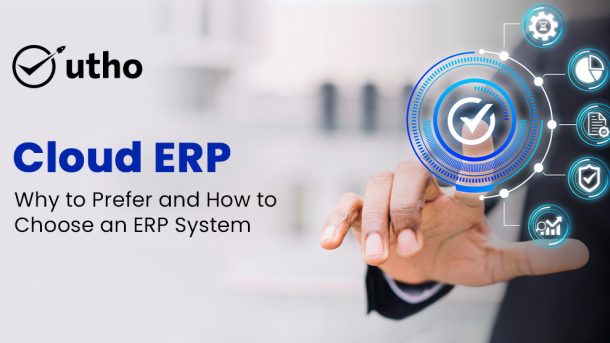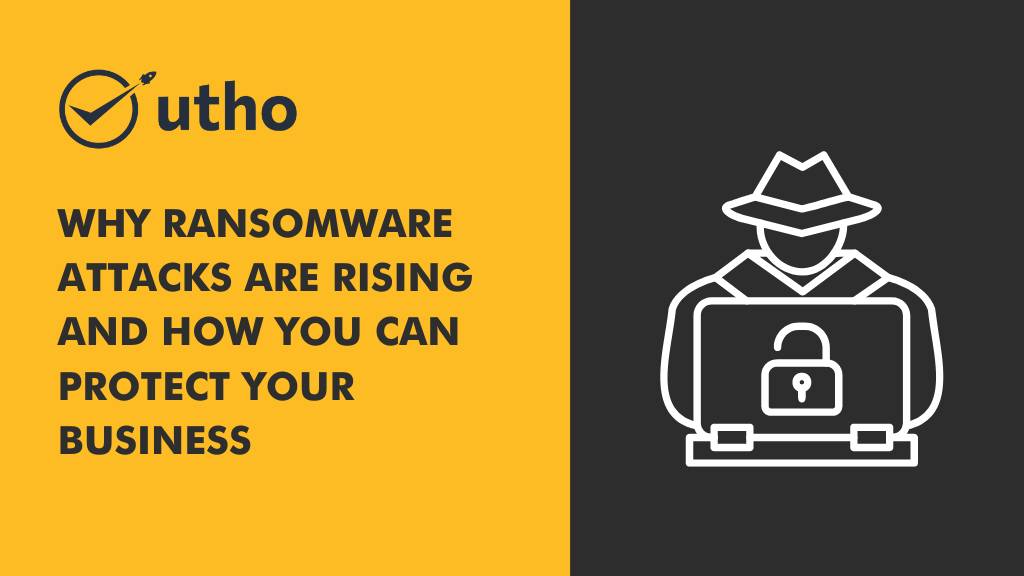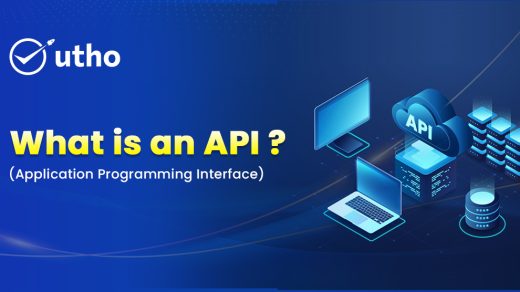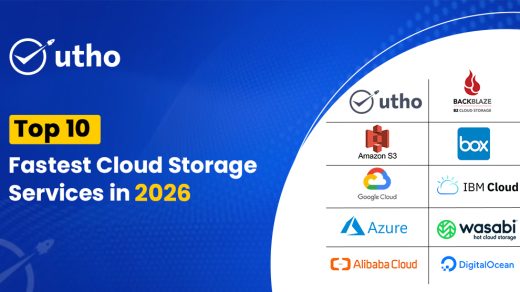In this ERP blog, we look at enterprise resource planning (ERP) software and explore its role in improving business success. You might be exploring new ERP systems. Or, improving yourself in the age of digital transformation.
We'll cover the key topics. These include the definition and evolution of cloud-based ERP, why businesses prefer it, ERP trends to 2024, guidelines for choosing systems, and the future of ERP modules. Choosing a reliable ERP system from ERP cloud providers.
What exactly is cloud ERP?
Cloud ERP is enterprise resource planning software that is hosted on a service provider's cloud platform, rather than on the company's own computers. This modular system combines key business processes. These include accounting, human resource management, and inventory and purchasing. They are all in a single framework. Before cloud computing rose in the late 1990s, ERP systems operated on-premises. They were also called "on-premises." The cloud ERP era began in 1998 with NetLedger. NetLedger later became known as NetSuite. It was the first ERP cloud provider over the Internet.
The Evolution of ERP
ERP systems have undergone considerable evolution since their inception. They were made to connect business functions and streamline processes. But, they have changed a lot due to tech advances and shifting business dynamics.
Migrate to Cloud ERP. It's the latest step in evolution. It uses the power of the cloud to give businesses unmatched flexibility, scalability, and low cost.
Traditional ERP systems are usually on-premise. They have long struggled with high implementation costs, complex maintenance, and limited scalability. However, cloud computing is a paradigm shift. It will transform the ERP environment and fix these barriers.
Why companies prefer cloud-based ERP solutions
Better efficiency
Traditional ERP solutions are unlike cloud computing. The speed of operation in ERP depends on many factors. But, cloud computing is fast. It offers real-time insight and quick response to user requests.
Data backup
In traditional ERP settings, it is almost impossible to recover lost data from one place due to lack of backups. However, cloud-based ERPs store data securely. Recovery is easy, even if it is accidentally deleted.
Lower operating costs
Cloud ERPs are flexible. They do not need special hardware. This makes them available to small businesses. They have minimal implementation and operating costs. But, traditional ERP systems need lots of hardware and people. Small businesses often can't afford them.
Higher adoption rate
Cloud ERP solutions or ERP cloud providers can get 20,000 customers in 18 months. It takes traditional ERPs about five years to get that many. Their rapid deployment and user-friendly nature save companies time and money worldwide.
High mobility
Cloud-based ERPs offer unmatched mobility and accessibility. They do this by adding features with dedicated apps for mobile devices. Users can access data from anywhere, a feature missing from traditional ERPs that adds convenience at an affordable price.
Financial Retention
Cloud-based ERPs cut upfront hardware costs. They need little human help, as the service provider provides most IT support. Updates are automated, which reduces the need for maintenance and eliminates the need for a large IT team.
Data security
Cloud ERPs ensure high data security. They protect against data theft by not storing data in local databases. Instead, they encrypt it in the cloud. This setup gives businesses peace of mind.
Global reach
ERPs are available globally. Businesses can spread without installing hardware or software in remote locations. This enables seamless growth and scalability.
ERP Trends in 2024
Cloud-based ERP
Cloud-based ERPs are rapidly beating on-premise solutions. They offer usability, convenience, and many advanced features. ERP cloud providers are dropping support for old systems. Cloud-based ERPs are ready to take over. They offer the scalability, flexibility, and compatibility needed for digital transformation.
Integration of AI and Machine Learning
ERP systems now use AI and machine learning. They enable smart decision-making, automation, predictions, and forecasting. This improves tasks. It helps with demand and supply planning and inventory to meet changing needs.
User Experience (UX) and Mobility
Modern ERP systems or ERP cloud providers prioritize interfaces that are intuitive and accessible anywhere. They prompt vendors to simplify interfaces. They should also make mobile apps for advanced data and operations anywhere.
Integration with emerging technologies
ERP systems now integrate new technologies. These include blockchain, augmented reality, and the Internet of Things. They enable real-time data for supply chain management and decision-making.
Customization and Modular Solutions
ERP systems have advanced. They offer modular solutions. These allow businesses to tailor the systems to their needs. This improves user experience and adoption rates with customization options.
Focus on cyber security and data protection
Cyber security and data protection are big concerns. ERP systems hold critical business data. In 2024, ERP systems should have strong security. They should also follow global data protection rules. This is to shield sensitive data from online threats.
Blockchain integration for better transparency
Blockchain technology finds its place in ERP systems, especially in supply chain management. This provides more security. It also gives transparency and traceability. It reduces fraud and ensures unchangeable transaction data.
Choosing a Reliable ERP System from ERP Cloud Providers
When selecting an ERP system from ERP cloud providers, prioritize key features that provide a comprehensive view of your business.
Shared Database
A centralized database provides unified, shared information and information. data complete picture of the company.
Embedded Analytics
The tools include built-in analytics, self-service BI, reporting, and compliance. They give smart visibility across the enterprise.
Data visualization
Real-time dashboards and KPIs provide critical information for informed decision-making.
Automation and simplification
Automate repetitive tasks. Use advanced AI and machine learning tools to work faster.
Uniform UI/UX
The modules have a uniform look and feel. They have user-friendly tools for processes and for end users. This includes customers, suppliers, and business units.
Easy and flexible integration
Seamless integration with other software solutions, data sources, plugins and third-party platforms.
Support for new technologies
It must be compatible with new technologies. These include IoT, AI, and machine learning. It must also work with advanced security and privacy measures.
Robust technology platform
The technology stack is reliable and proven. It supports low-code/no-code and knowledge management platforms. It's for long-term investment.
International and Multi-Currency Support
Support for different currencies, languages, and local business practices and regulations.
Technical Support
Comprehensive support for cloud services, training, help desk, and implementation.
Flexible deployment options
Cloud/SaaS, on-premises or hybrid deployment options depending on your business needs.
Hesitations About Migrating to Cloud ERP
When considering the future of cloud ERP, think about how it will affect your business. Considering the potential cost savings, scalability, accessibility, and strong security of cloud-based ERP systems, you might wonder why there's hesitation in moving from expensive on-premise ERP systems. Transitioning from on-premise to cloud ERP is complex and typically requires assistance from a cloud migration partner, involving significant time and financial investment. Many developers are planning to stop updating and supporting non-cloud ERP systems soon, making this migration inevitable.
Concerns also arise from moving critical software systems to a new platform. Even if the cloud ERP is from the same developer as your on-premise system, there will be differences, necessitating user training and potentially disrupting operations. However, the benefits of additional features and functionalities in cloud ERPs often outweigh these inconveniences.
Switching to a cloud ERP can save costs, which can justify migration and training expenses. Like any big software project, moving to a cloud ERP needs careful planning and expertise.
At utho, we understand the challenges of ERP migration and implementation. Our experienced consultants provide guidance to ensure your project is completed with minimal stress and maximum return on investment.
The Next Evolution of ERP
ERP systems are still being developed to meet the changing needs of businesses. Here's a taste of what's to come:
Intelligent ERP powered by artificial intelligence
AI integration will become even more advanced. It will help with data analysis and enable autonomous decisions. Expect improvements in predictive maintenance, demand forecasting and intelligent supply chain management.
Blockchain for transparency and trust
Blockchain technology increases transparency and trust in ERP systems. This is especially true in supply chain management. It ensures that products can be traced and are authentic. It also protects sensitive transactions, which increases data security and accountability.
Improved user interfaces
ERP systems have simpler and user-friendly interfaces. They prioritize simplicity and efficiency to serve a wider user base. This improves the user experience.
Edge Computing Integration
Edge computing is becoming part of ERP systems. This is especially true when real-time computing is critical. At the source, edge devices reduce latency and improve responsiveness. They are especially helpful in manufacturing and logistics.
Expanded ecosystem and cloud integration
ERP systems are increasingly integrated into a broader ecosystem of tools and platforms. Continuous cloud integration ensures seamless connectivity with other cloud services. It helps with data exchange, automation, and advanced features.
Cyber Security First
As cyber threats increase, ERP cloud provider are prioritizing cyber security. Advanced threat detection, intrusion prevention, and real-time monitoring are now standard. They keep data safe and keep the trust of customers and partners.
Sustainability and Green ERP
Green ERP systems help organizations cut their carbon footprint. They do this by optimizing resource usage, supply chain efficiency, and cutting waste. Sustainable development becomes both a corporate responsibility and a strategic advantage.
Interesting ERP facts and statistics
Choosing the right ERP cloud providers is essential. You need a clear business strategy for successful implementation and achieving goals.
The ERP market is driven by global business growth. It is also driven by digital transformation and the need to manage and analyze massive data. Market forecasts show strong growth and spread of ERP systems around the world.
Businesses use ERP solutions to cut costs. This also boost efficiency and performance. This helps drive overall business success. This also show the importance of efficient ERP solutions. These are industry standards.
ERP solutions meet different needs from SMEs to large corporations and international companies. In the digital age, companies invest heavily in ERP projects. They spend much time, resources, and budgets to ensure competitiveness and success.
ERP data and AI Predictions
By 2026, ERP data is expected to power 30% of all predictive analytics and AI predictions in businesses.
ERP Implementation Challenges
While the technical aspects of ERP implementation are understandable for most (8% see them as challenges), process and organizational changes present greater obstacles to projects.
ERP Market Growth
The global ERP market, valued at $33.8 billion in 2017, is expected to grow to $47.9 billion by 2026.
ERP Manufacturing Revenue
The top advantage of ERP systems is shorter cycle times (35). %), reduced inventory (40%) and IT costs (40%).
ERP for all industries
Every business needs accurate, real-time data. They also need streamlined processes. This is true regardless of size or industry. It is necessary to stay competitive. Different industries use ERP systems uniquely to meet specific needs:
Wholesale and distribution
Companies aim to reduce distribution costs, increase inventory holdings and shorten order cycles. They need ERP solutions. These manage inventory, purchasing, and logistics. They also handle custom automated processes.
Utilities
Utilities manage fixed assets. They solve critical problems with ERP systems, such as forecasting and inventory management. These are needed to prioritize large investments.
Manufacturing
Manufacturers rely on ERP and supply chain systems. They use them to ensure product quality. They use them to optimize asset use, control costs, manage customer returns, and keep accurate inventory.
Services
Service industries use ERP technology. They use it to manage project profit. They also use it to allocate resources, track revenue, and plan growth. This includes professional services.
Retail
E-commerce is rising. Modern ERP systems give retailers integrated data on self-service. It includes insights from customers. It leads to lower cart abandonment. It also leads to better sales, higher order value, and more customer loyalty.
Common ERP Modules Explained
Finance
ERP systems' core manages the general ledger. It automates financial tasks and tracks payments/receivables. It facilitates financial transactions, makes reports, and ensures compliance with financial standards.
HR
It includes time and attendance, and payroll. It also integrates HR plugins for better employee management and analytics.
Procurement
Automate and centralize the buying of materials and services. This includes bids, contracts, and approvals.
Sales
Manages the customer journey. Provides sales teams with data insights. This insight helps them improve lead generation, sales cycles, and performance.
Manufacturing
Automate hard manufacturing processes. Align production with supply and demand. Include MRP, production planning, and quality assurance.
Logistics and Supply Chain Management
It tracks material and supply transfers. It manages real-time inventory, transportation, and logistics. This improves supply chain visibility and agility.
Customer and Field Service
It enables great customer service and field service management. It also supports resolution, customer loyalty, and retention.
Data Analytics and Business Intelligence
It's essential for reporting, analysis, and sharing of business data and KPIs in real time. It's used across functions. It supports data-driven decision-making.
Final Thoughts
The stability of an ERP system is crucial for smooth business operations. Regular audits, performance monitoring, updates, security assessments, and user training are essential. Addressing issues early and improving performance and security keep your ERP reliable and efficient.
Switching to a cloud-based ERP with Utho, a reliable ERP cloud provider offers unmatched accessibility, cost-efficiency, scalability, enhanced security, and automatic updates. We use virtual machines, MS SQL Database services, application servers, and backups, tailored for optimal performance and efficiency. Our expert guidance helps maintain stability and optimize performance.
Contact us at www.utho.com to maximize your ERP investment and ensure long-term success. Your stable and efficient ERP system is just a click away.




